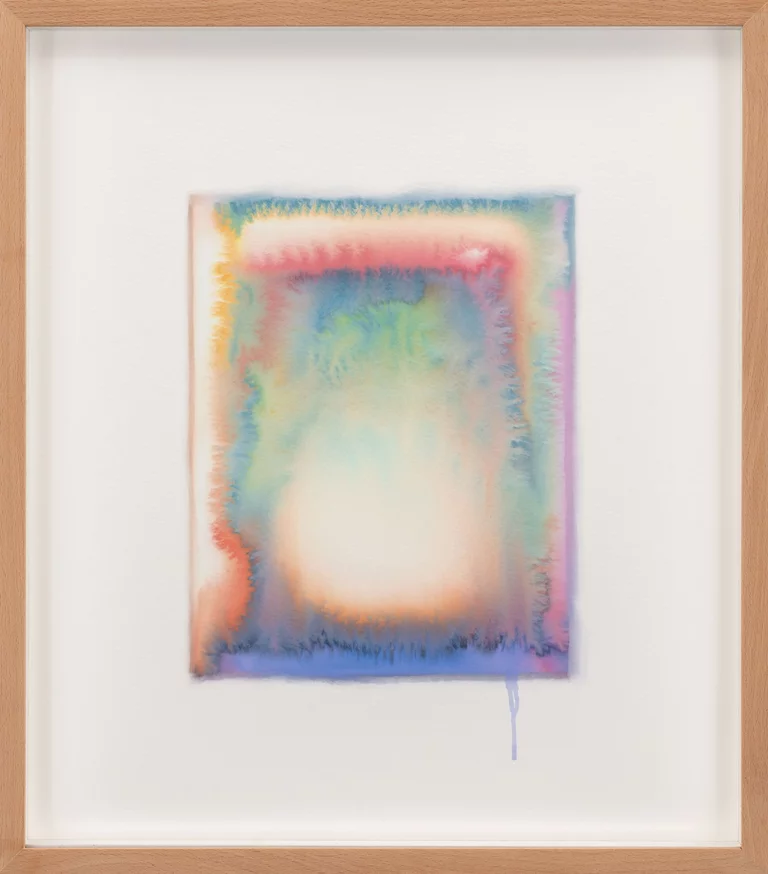GIOELE AMARO: MISSING FIGURES
Almine Rech London is pleased to present Missing Figures by the artist Gioele Amaro. Missing Figures is an exhibition to which you will always arrive too late. As we stand, catching our breath before the first of the works, we are met by the radiating aura of a figure just gone.
April 11 – May 18, 2024
Throughout the show, Amaro teases us with perpetual almost-meetings. Domed structures that call to mind Byzantine iconography glow suggestively, as if the missing subjects might return any second. For now, their auras come to the forefront of the images, gradients of luminous hues emanating from the canvases — perhaps we were always missing the most vital aspects of these religious scenes.
In place of oil paints and brushes, Gioele Amaro uses digital softwares, sty-lus pens and artificial intelligence. In collaboration with these technologies, he renders images so like oil and watercolor paintings that it is sometimes impossible to discern their origins through looking alone. Their ambiguity is central to the project. In Waiting , a distinctly digital halo sits at the centre of a vacated iconographic dome.
As we examine our own expectations of art, Amaro’s work deconstructs the fetishization of the artist, their tools and processes. By drawing parallels between religious and artistic fetishization, Amaro reevaluates the role of the artist in contemporary society. The figure is absent for a moment, not out of fear or avoidance, but in order to reflect and reconsider their place in a changing world.
Many of the works on show contain a strangely organic quality. In the digital watercolor paintings, ink appears to melt into the roughly cut paper and, in collaboration with artificial intelligence, Amaro conjures patterns that diffuse and set like real paint. Still, small signs of the work’s digital origins wink at us from the gallery walls. In Vaping , the collaboration ventures off course.
Droplets of digital paint splatter and drip down the canvas as Amaro’s artificial intelligence collaborator misinterprets his instructions to make the image more paint-like. The piece contains a mysterious ambiguity, although in a different way from the others on show, and demonstrates how artificial intelligence can expand an artist’s visual lexicon.
Further, this new species of faults might more closely resemble the randomness of contemporary digital life. With this in mind, Amaro carves out his place as an artist in a changing world, creatively responding to errors and envisioning how the spontaneity that ultimately makes art and art making exciting might exist in the digital realm.


